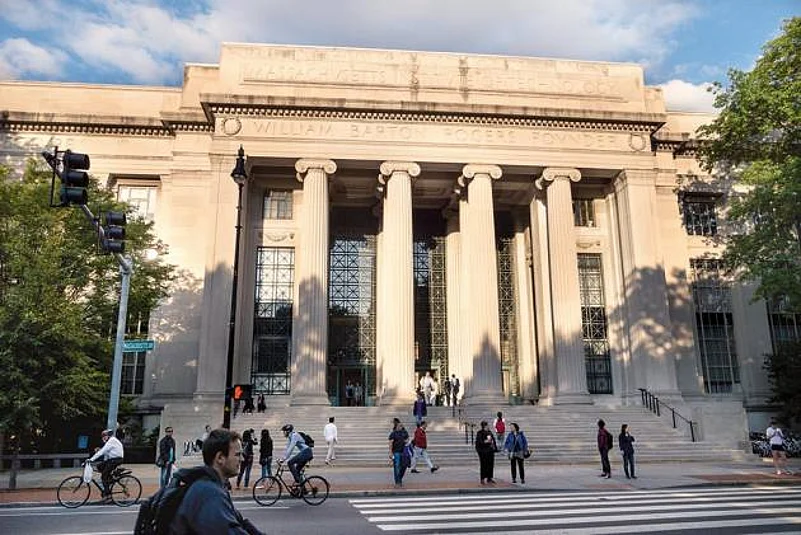What does the fall semester look like across American campuses?
“The reality is,” writes Matthew Kirschenbaum in the Chronicle of Higher Education, “this is what higher education looks like in a failed state.”
Caught between a pandemic and a financial crisis, and provoked by the inconsistent policies of the federal government, several universities have chosen financial stability over the sanctity of human lives.
Protests are gathering momentum across campuses, which are enforcing physical presence as a requirement. Outside of the University of Oklahoma Board of Regents meeting, a group gathered for a “die-in” and drive-in protest. The University of Texas at Austin is also experiencing waves of protest and resentment.
Advertisement
“The UT administration apparently views death on campus as inevitable rather than preventable, which is disappointing,” Katie Kaufman Rogers, a graduate student and TA in sociology at UT Austin told the Chronicle. “But it’s also scary, because I work there.”
A New York Times analysis had identified UT Austin as the university with the highest number of reported coronavirus cases: 449, including students and employees. The university suffered its first coronavirus fatality in July, long before the projected beginning in the fall – a custodian.
The situation in Texas colleges demonstrates the severity of the pandemic in the state, as well as the resistance revealed by many of the red states against cautionary measures that will adversely affect business, higher education among them.
Advertisement
“Social distancing is not possible on a college campus at all times,” Richard Eglsaer, the provost of Sam Houston State University has declared in a memo. “It will not be possible to meet CDC guidelines to the letter in all situations.”
Other affected states with campus reopening plans, many of them in the south, have also seen a wave of protests. The University of Georgia exploded with protests against inadequate engineering of plexiglass shields to be installed in every UGA classroom to separate the professor from the students – which in some cases have turned out to be too short for several faculty members.
Sadly, the choice, for many colleges is between a potentially fatal reopening and the inevitability of cuts, furloughs and layoffs for employees. Faced with this, the most sensible approaches have come to include a variety of hybrid models, combining remote and face-to-face instructions, as well as staggered presence of different cohorts at different points in the semester to ensure a smaller student population where social distancing would be easier to enact.
The Institute of International Education (IIE) provides a broad picture in its latest Covid report. According to this report, nine in ten (92%) higher education institutions will have a new instruction approach in the fall 2020 semester. Moreover, 87% of institutions said they plan to offer hybrid instruction in fall 2020, with approaches ranging from limited in-person instruction and restricted class size to allowing in-person instruction for certain classes. Institutions that plan to have in-person instruction are implementing various prevention measures to stop the spread of COVID-19 among students and faculty on campus. Institutions are implementing key prevention techniques including mandatory face coverings for everyone on campus (94%), restrictions on events on campus (89%) and restrictions on social areas on campus (85%).
Advertisement
Among those that have announced changes to upcoming academic calendars, more than four in five higher education institutions (84%) anticipate ending the fall 2020 semester early.
International offices and students are reeling from the pandemic – and no less from the difficult and inconsistent recent federal policies about the status of international students in the country. The report reveals that more than 57,000 international students have accepted enrolment in the fall 2020 semester, according to nearly 300 institutions. A majority of institutions (87%) are providing international students the option to defer enrolment to spring 2021. Over 40,000 international students remained enrolled on campus in summer 2020. 91% of institutions anticipate that the majority of international students who were enrolled and remained in the U.S. during the summer will continue their studies in the fall.286 institutions reported more than 57,000 international students accepted enrolment in the fall.
Advertisement
Despite a significant decline in study abroad programs for fall 2020, 84% of institutions continue to plan study abroad programs for future semesters. But a steep decline is projected in the near future. Over 79% of colleges and universities expect a substantial decline in study abroad numbers for the 2020-2021 academic year. Despite delayed study abroad programs due to intercontinental travel restrictions, 40% of institutions continue to promote US study abroad for future semesters with the same frequency; 51% of institutions said they have already updated future study abroad safety protocols as a result of COVID-19.
As the fall semester gets underway, another emerging worry is the possible spread of the pandemic along student migration patterns across the nation. According to a Chronicle report, more than 400,000 students will be travelling to campus from states that are coronavirus hotspots.
Advertisement
All of a sudden, colleges have a whole new reason to focus on students’ home towns. A new and frightening reason.
(With research input by Vivek Mansukhani, Head, IIE India)
(Saikat Majumdar writes about arts, literature, and higher education. @_saikatmajumdar.)



















